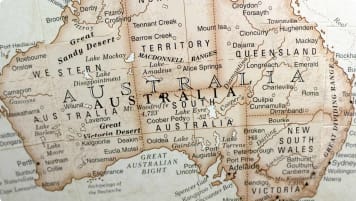Kings Park, Perth
Perth hosts the biggest inner-city park in the world, the 400 hectare Kings Park, with 6 million visitors a year. As part of the Wildflower small group tour we visit and learn about the endemic plant collection in the park.
28 Apr 20 · 5 mins read

Kings Park, Perth
Walking through the bushland of Kings Park, Perth, it would be easy to believe that you were in the bush, and not just five kilometres from the centre of Australia‘s fourth-biggest city. The biggest inner-city park in the world, the 400 hectare Kings Park (that’s 60 hectares bigger than Central Park, New York!) is packed full of fascinating historical and natural sights. It’s easy to see why it is Western Australia‘s most popular attraction, bringing six million visitors a year – in a city of just under two million.
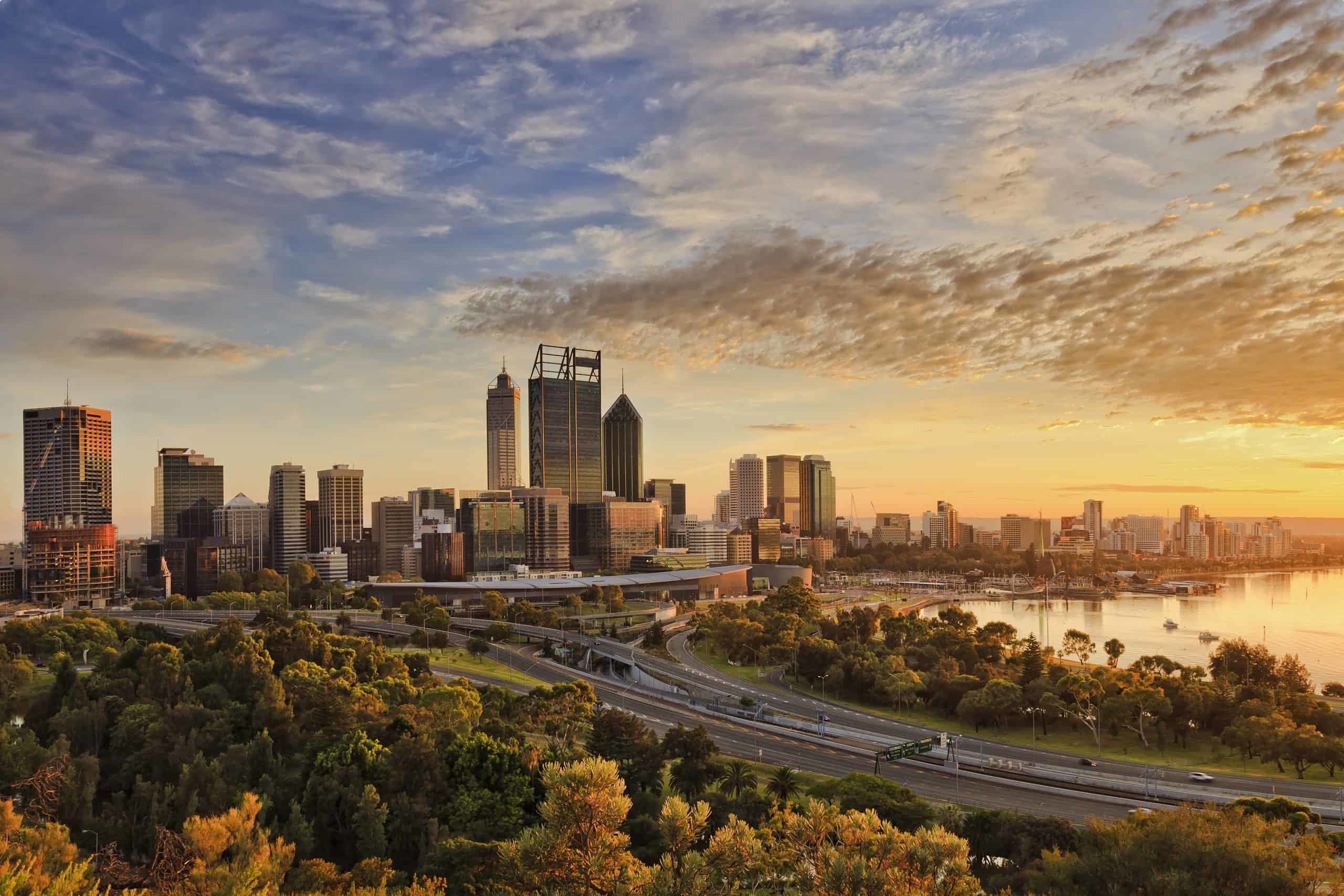
Mount Eliza, the highest point of Kings Park, was known to the Nyoongar Aboriginal people by a variety of names, including Mooro Katta and Kaarta Gar-up. Nyoongar is the generic name for the Aboriginal people who lived in the south of Western Australia for over 40, 000 years prior to colonisation. For the Nyoongar, Goonininup, or the area at the base of Kings Park, was an important ceremonial and dreaming place for men. Today, the Botanic Gardens and Park Authority is committed to honouring the Indigenous culture associated with the park. Nestled in the heart of the Botanic Garden (more on that later) is the stone amphitheatre Beedawong, meaning ‘celebration’ or ‘meeting place’, used for Nyoongar cultural activities including storytelling and dance performances, while the Boodja Gnarning Walk trail explores Nyoongar use and understanding of the land.
Following European colonisation of Western Australia in 1829, the state surveyor-general, John Septimus Roe, refused permission to cut timber on Mount Eliza, indicating that it should be preserved for public purposes. However, logging of jarrah (Eucalyptus marginata) began in 1836, continuing through to the 1890s.
The park was opened in 1897, and named King’s Park in 1901 to honour the accession of King Edward VII to the throne following Queen Victoria’s death. The use of the park as a site for memorials began then, with the construction of a Boer War Memorial near the park‘s entrance.
The Avenue of Honour for those who fell in World War I was planted in 1919 with oaks and plane trees. All but one succumbed, and the avenue was replanted in eucalyptus. Today, the three eucalyptus lined avenues are home to over 1800 plaques commemorating Australians who have lost their lives at war. Nearby is the State War Memorial Precinct, including the Cenotaph, Court of Contemplation, Flame of Remembrance and Pool of Reflection. Every year, more than 40, 000 people attend the Anzac Day dawn service at King’s Park.
In subsequent years, King’s Park has seen the addition of new attractions. Most notable is the Western Australian Botanic Garden, a sweeping 17 hectare of botanical displays, added in 1965. A new restaurant strip was added on Fraser Avenue in 1995. In 1996 the park began to be used for open-air concerts, with performers including Blondie, Cyndi Lauper, and local boy Tim Minchin.
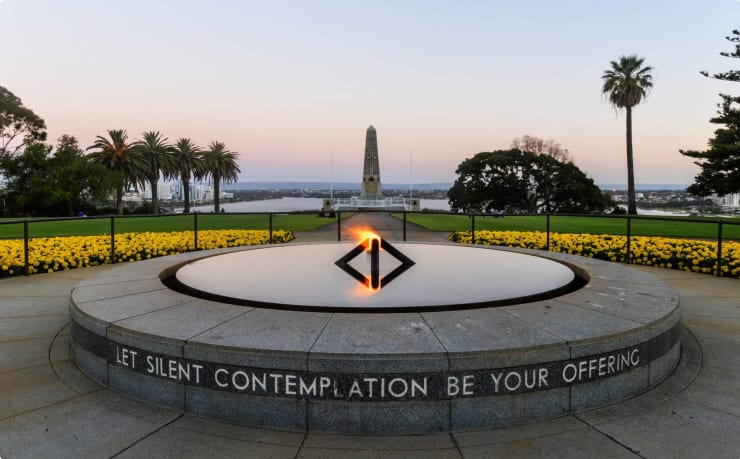
Western Australian wildflowers and Kings Park:
Western Australia is home to one of the world’s most extensive collections of wildflowers. Every wildflower season, over 12,000 species of wildflower (60% of which are only found in Western Australia) bloom, attracting wildflower enthusiasts from around the world.
The Botanic Garden at King’s Park is a dream for wildflower lovers. Focused around the display and conservation of Western Australia‘s native flora, the Botanic Garden is home to over 3, 000 of Western Australia‘s 12, 000 wildflower species, many of which were cultivated for the first time following the opening of the park in 1965. With beautiful views of the Perth skyline and Swan River, the Botanical Garden is an ideal place to learn about Western Australia‘s unique wildflowers.
Plantings are grouped by regions of the state or taxonomic group. A particular highlight is the Conservation Garden, devoted to showing off Western Australia‘s most endangered wildflower species, which even many locals will never have the chance to see in the wild.
Regional displays are devoted to flora from the Wheatbelt (including the famous Leschenaultia Macrantha, also known as the ‘wreath flower‘), Goldfields, the Kimberley, Rottnest Island, Stirling Ranges, and of course, the south west coast, spanning from Esperance to Perth, recognised as a ‘biodiversity wildflower hotspot‘ for its incredible collection of wild blooms.
Other displays are devoted to iconic West Australian flora. The Banksia Garden is devoted to the over 62 (out of 76) species of banksia unique to Western Australia, paired with marble pavements designed by the artist Philippa O’Brien. The Acacia Garden is set among a dry river bed, accommodating a large organic staircase. Wander up the stairs to trace the evolution of Western Australia‘s largest native genus, which primarily reside in the arid and semi-arid sands of the golden outback.
Another draw is the Giant Boab, which captured media imagination when it was transported 3,200 kilometres south from the Kimberley to King’s Park – the largest and most mature tree to be ever transported such a distance over land. Saved from impending destruction due to the Great Northern Highway, the tree, now known as ‘Gija Jumulu’, is a gift from the Gija people to the people of Western Australia.
Outside of the Botanic Garden, over two thirds of King’s Park is devoted to protected woodland. The King’s Park region is home to three major plant communities: limestone heathland; banksia woodland, and low moist areas with banksia ilicifolia. There are 326 species of native plants growing in the woodland, which constitute about 15% of the biodiversity of the Perth region. King’s Park is also home to over 70 species of birds, and a number of mammals, including possums, quenda, and a number of bat species.
The peak of Mount Eliza reaches a high point of 65 metres, and offers sweeping views of the city skyline, the Perth Hills on Perth’s outskirts, and even the Darling Escarpment.

Odyssey Traveller visits King’s Park, Perth, as part of our new Wildflower Tour of Western Australia. Designed especially for mature and senior travellers, our tours take you to see Western Australia‘s finest wildflowers. Leaving in spring, so that you can see the peak of wildflower season, our tour winds from Perth through the Wheat Belt, talking the famous Wildflower Way from Mullewa to Wubin. Heading outback to Merriden and Kalgoorlie, our tour winds south to Esperance and the Wildflower Trail, before heading back to Perth via Albany, Cape Le Grand National Park (home to several unique species of banksia), and the Margaret River.
Odyssey Traveller’s wildflower tour is a small group adventure designed for between 6-12 people, led by an expert guide. The tour cost includes accommodation, entrances to attractions, and transport in a comfortable modern bus.
If that interests you, click here for more information. You might also be interested in more information about our Australia tours, including our tour of the Kimberley Region, our tour of the Flinders Ranges, and our Outback Queensland adventure.
Articles about Australia published by Odyssey Traveller:
For all the articles Odyssey Traveller has published for mature aged and senior travellers, click through on this link.
External articles to assist you on your visit to Western Australia:
Related Tours
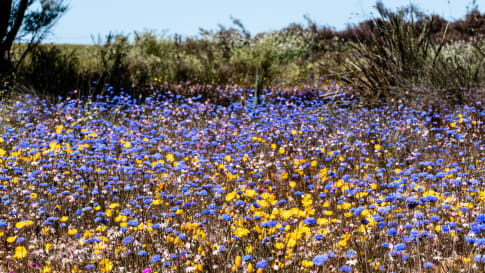
15 days
Aug, SepWildflowers tour of Western Australia
Visiting Western Australia
Escorted small group tour for senior and mature travellers as a couple of solo traveller. Upto 12 people of WA's Wildflower regions including Esperance and the Fitzgerald river National park. Local guides and program leader share knowledge about this fascinating region whilst in bloom.
From A$12,250 AUD
View Tour
13 days
May, Jun, Jul, Aug, SepSmall group tour of Australia's Kimberley
Visiting Western Australia
Escorted small group tour of the Kimberley. We explore and visit The Bungles, Bell Gorge, Mitchell plateau & Halls Creek in the dry season. Amazing landscapes intertwined with Aboriginal communities resident more than 45,000 years.
From A$15,390 AUD
View Tour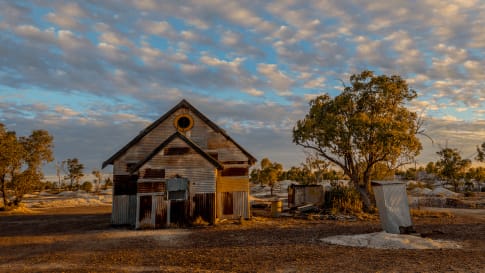
days
Mar, Apr, May, Jul, Aug +2Small group tour of outback Queensland
Visiting New South Wales, Queensland
To Dubbo and back, this small group tour takes you to learn about the Brewarrina fish traps, we travel high up into North Queensland to see the Dinosaurs of Winton and incredible Aboriginal rock art at Cathedral gorge and learn about opal mining and the history of Lightning ridge.

